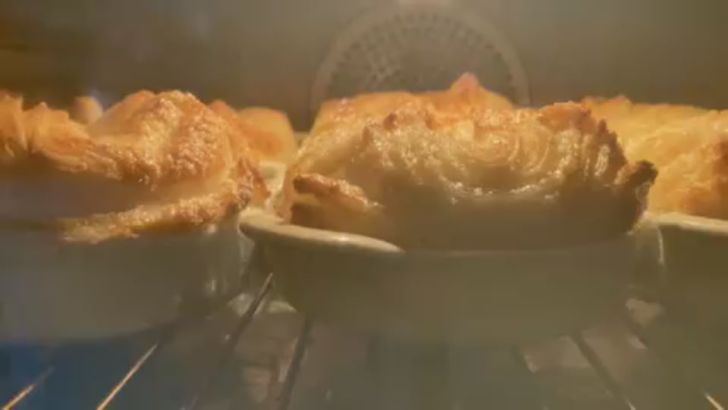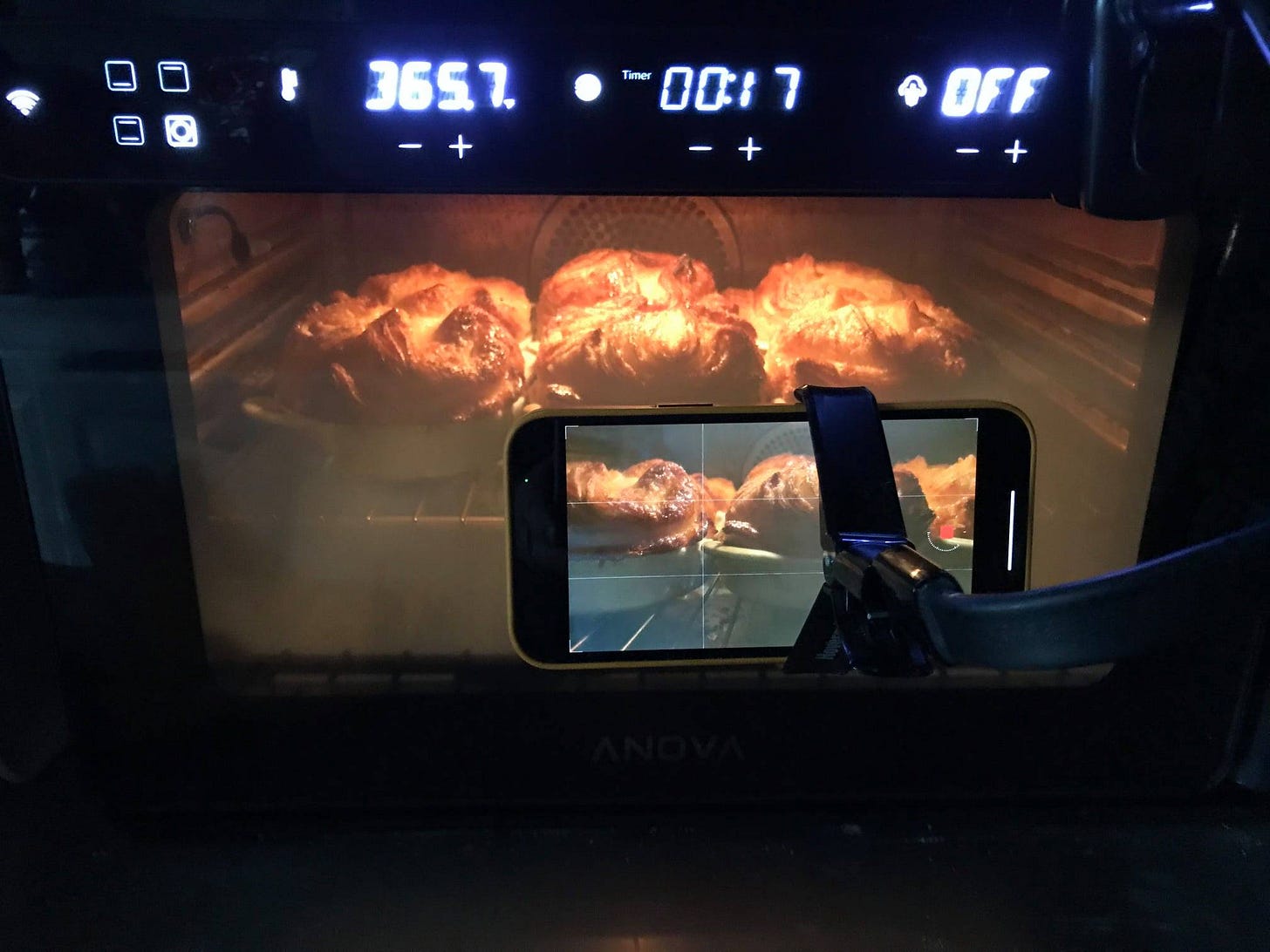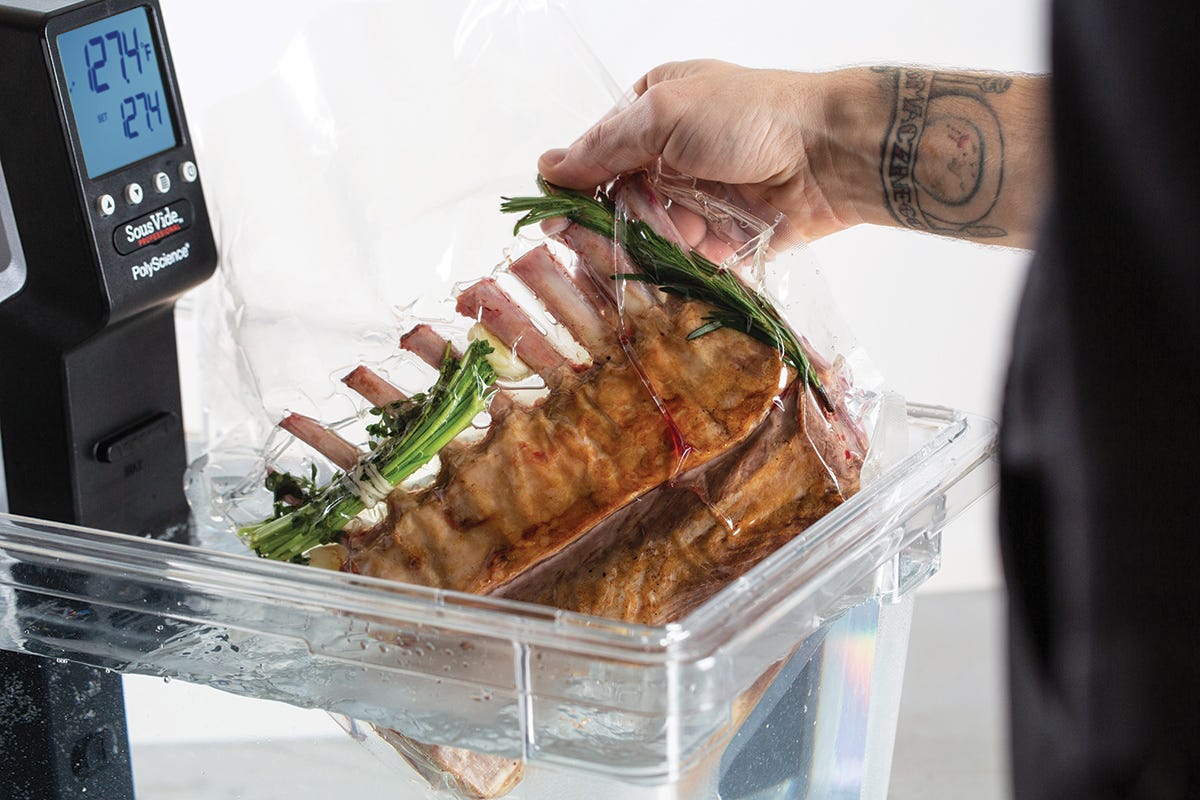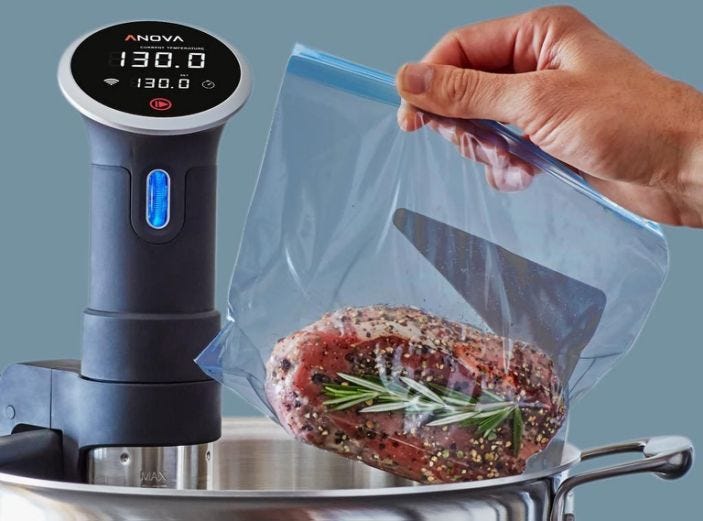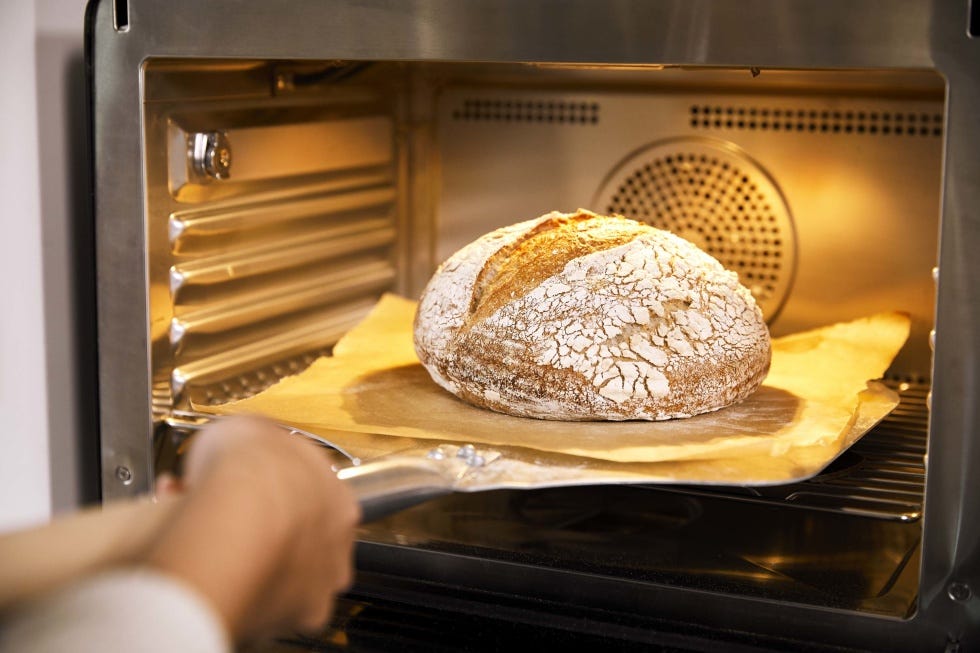Business Model Study: Anova, Professional Tools on a Personal Budget
Blue Ocean business Anova creates at-home versions of tools used by professional chefs bringing noncustomers into high-end cooking.
Check out this beautiful time-lapse video, by C. Jesse Imbach, of Kouign Amann baking in steam. Jesse is using the Anova Precision Oven, the latest offering from kitchen appliance maker Anova. Their business model is to create professional quality kitchen tools priced for ordinary consumers.
The time-lapse slow-motion video was filmed with a standard phone:
There are few sentient beings who love food more than me, our French bulldog Mazik being the only one I know of. However, Mazik, being a dog, doesn’t much about looks and her sole interest with screens is a fascination watching people handle horses on television, though I digress.
Steam ovens, as the name implies, are capable of combining heat with steam for precision cooking. What’s the benefit of steam cooking? Steam conducts heat well. Think about the temperature outside on a 90-degree (32C) day with low humidity and one with high humidity. The low-humidity day ends in a nice memory of swimming and picnics whereas the high-humidity day is more likely to end with heat-stroke.
Humidity is far more conducive to heat than air. Walking outside on a 105-degree day (40.5C) is unpleasant but, absent an underlying health condition, unlikely to do much damage. In contrast, jumping into the same temperature hot-tub feels like being boiled alive.
Background
Conducting heat to a food source lies at the heart of the science behind low-temperature “sous vide” cooking, a technique developed by French chefs for precision results. Sous vide means under vacuum.
The French realized that vacuum sealing food in plastic bags and cooking it at precise temperatures yields consistent high-quality results. For example, vacuum sealing a steak and cooking it in a vat of water at 135F/57C produces a medium-rare steak ready to be quickly seared and served. Cooking the same in a traditional oven, at the same temperature, is a recipe for raw food.
One benefit of the technique allows, for example, restaurants to cook 30 steaks in the water bath before dining begins. Chefs can leave them there until ordered then quickly finish on a high-heat grill when needed. The long cook times at a lower temperature both pasteurizes and tenderizes the food.
The technique was invented by Bruno Goussault and George Pralus in 1971 but available only to the highest-end restaurants. Sous video equipment, capable of keeping the water baths at a precise temperature, was expensive, difficult to purchase, and complicated to use.
Steam Ovens
In 18th-century Vienna, bakers noticed that adding steam at the beginning of a cook yielded better baguettes. The steam caused bread to become light and airy in the center then vacating the steam for the second part of a cook created a crispy crust.
Professional and home bakers have known about the benefits of steam cooking for years. Home cooks jerry-rigged steam ovens by putting pots of boiling water into regular ovens at the beginning of a cook to produce steam.
In 1983, German appliance maker Bünde attempted to launch an at-home steam oven. It’s considered a disaster, described as “essentially a pressure cooker requiring considerable installation effort…”
High-end German appliance manufacturer Miele acquired the business and set about reengineering the product line. They produced a workable home steam oven in the early aughts though the price was still relatively steep. Commercial steam ovens typically cost thousands of dollars and required special installation.
Professional equipment for the rest of us
The earliest maker of widely-purchased sous vide equipment is a company called PolyScience. Their tagline is “Temperature Control Solutions” and their website features people in lab coats working in a lab-like environment. Their website all but screams “go away if you’re not a professional chef purchasing for a commercial kitchen.” PolyScience sous vide water circulators were large and expensive.
Given the as-is market at the time, there was nothing wrong with PolyScience’s original approach. The vast majority if not all sous vide buyers were professional kitchens and the equipment needed to be rugged. If a sous vide circulator failed it could ruin a vat filled with over a thousand dollars of food and disturb or even eliminate a night’s worth of dining receipts. These machines were built and marketed for industrial use and, at the time, doing anything else would’ve made little sense.
However, in March 2011 former Microsoft Chief Technology Officer released a multi-volume series of books called Modernist Cuisine. More user manual for the kitchen than cookbook, the five-volume set cost hundreds of dollars and featured high-quality photos, graphics, and illustrations explaining how high-end restaurant kitchens function.
Myhrvold’s book worked like a Rosetta Stone for aspirational at-home cooks. It was expensive, though priced far less than chef school, and explained many of the mysteries about how real chefs work their magic. Despite the price and heft, the book sold well winning the prestigious 2012 James Beard Cookbook of the Year Award. I bought my copy in 2012.
One section that especially caught people’s attention was a new nearly foolproof cooking technique, sous vide cooking.
Blue Ocean Anova
Despite the protests of my wife, who was already annoyed at the expensive cookbook, I had to try sous vide cooking. But there was one major problem, a lack of machines. At the time there was one vaguely affordable sous vide machine, a large metal vat. It was small on the inside, took up a lot of room on the outside, was ridiculously expensive at $400, and looked flimsy. I risked a divorce and bought one.
It worked ok. Nothing spectacular. The problem was that “real” sous vide cookers — like the PolyScience devices — circulated the water to keep the temperature around the food consistent. However, my device used the principle that warm water rises to force a “natural” circulation (their word choice, not mine). Needless to say, the water temperature at the top was always higher than that at the bottom. Much like an oven with an uneven temperature, this caused problems.
Enter Stephen Svajian, an attorney who decided he’d rather cook up businesses than lawsuits. I’m assuming he also splurged on a copy of Myhrvold’s book, realized the existing sous-vide solutions were either lame or expensive, and rather than sulking he founded a business to solve the problem, Anova. Stephen’s business sold a circulator similar to that offered by PolyScience but at a far lower price point, targeting the at-home mass of buyers rather than solely professionals.
Sales took off. Like many blue ocean businesses, Anova’s customers tend to be fanatics.
Svajian and Anova quickly realized they were on to not only a new cooking technique but a new business model, creating high-quality reasonably-priced versions of expensive cooking tools. Anova’s sous vide circulators are high-quality and sold at a pricepoint most people could afford.
Making industrial things affordable for ordinary people is a common pattern of successful innovation. Products and services developed under this tend to do well and make a real difference in people’s lives. Think about the internet itself, developed as an enterprise system linking together large computers. The world-wide-web was built to link scientific papers and information for a massive nuclear particle accelerator. Those GPS chips in phones were created for armies to fight wars. The accelerometer that knows when you pick up your phone and enables movement tracking was developed primarily to control airbags. Wildly expensive LIDAR units at the top of self-driving cars are a component in the latest high-end iPhones.
Countless innovations flow from making big expensive enterprise solutions into affordable household products.
Anova’s Steam Oven & Jesse’s Awesome Video
All of which brings us back to Anova’s new oven and Jesse’s video. First, it’d be remiss to not notice the video was taken by placing an iPhone in front of the oven to create a high-quality time-stop video. This type of movie alone would’ve required professional equipment not so long ago. Jesse created it with an inexpensive tripod and what looks to be an older iPhone.
More to the point, Anova’s steam oven is a $600 marvel. At less than half the price of an entry-level Miehle oven, the Anova offers a piece of equipment found not so long ago in only the highest-end restaurants and bakeries.
The oven offers a “sous vide” mode enabling cooking at a high humidity level that imitates the benefits of sous vide cooking without the bags or vats of water. The oven can be adjusted, mid-cook, to switch from high humidity to dry heat. For example, the Anova oven can cook bread at high humidity until it is puffy and soft on the inside then switch to a traditional oven so the crust becomes dark and crunchy. Similarly, poultry can be cooked at a high humidity so it remains juicy then automatically finished off at a higher heat to make the skin crispy without drying out a bird.
I came across Jesse’s video on a Facebook group, Anova Precision Oven Cooking. I’m an American living in France. The ovens aren’t available here yet and, even when they are, there’s still my strained budget (thanks to COVID) and gadget-shy wife (thanks to the above-mentioned sous vide metal vat long since replaced by an Anova circulator). Still, I’m far more excited about this gadget than any I’ve seen in a long time.
During COVID lockdowns I’ve been working to perfect home-cooked bagels. Sure, I live in France but I was born into a family of Philly deli-owners. The French have great baguettes but I want a high-quality morning bagel. I’ve gotten pretty good but a steam oven sounds like the secret sauce to make my deli owning grandparents, may they rest in peace, nod approvingly.
My two passions are business and food. It’s great to be able to write about Anova, a blue ocean business that has fused the two together in an elegant melange.

